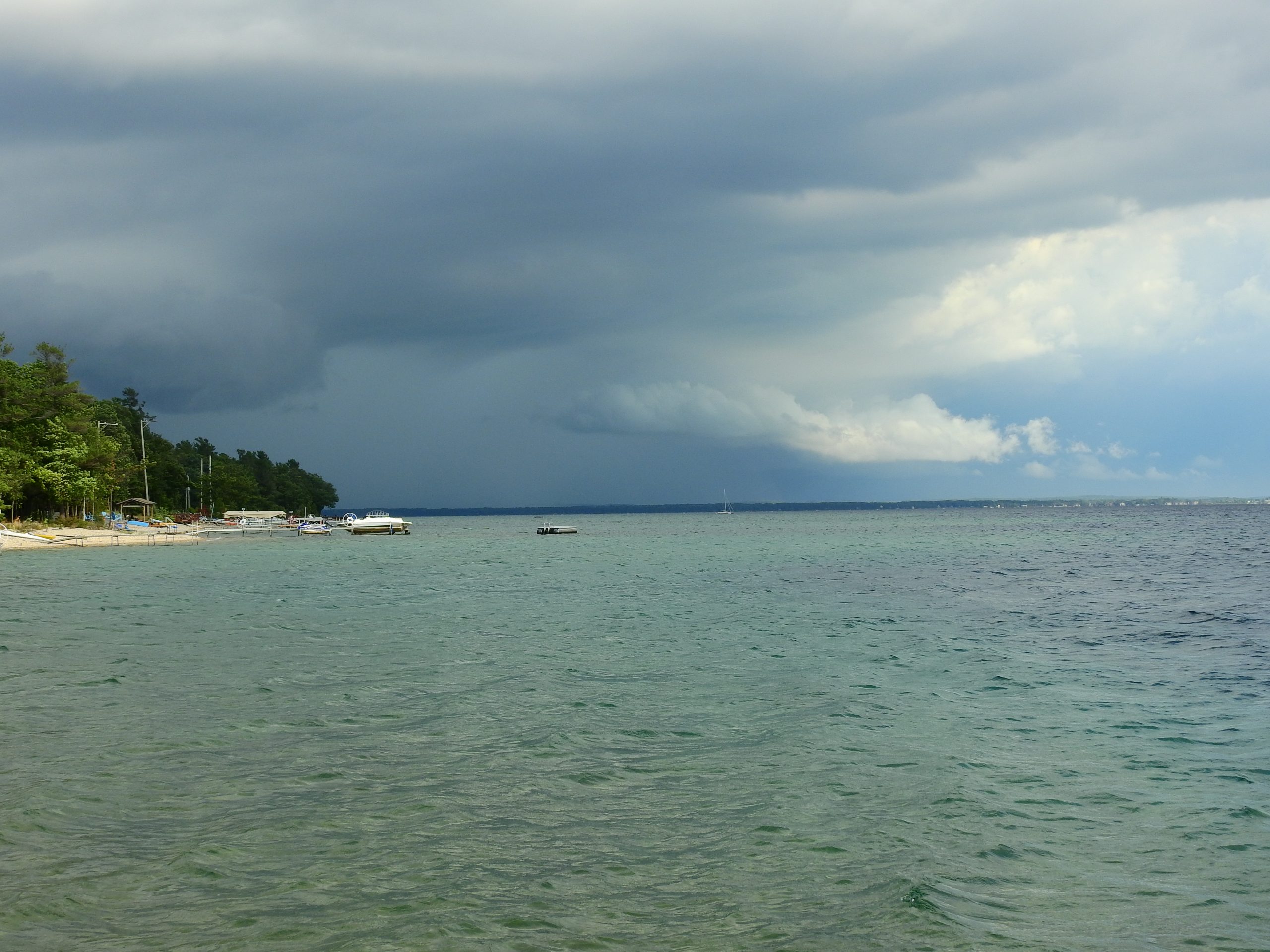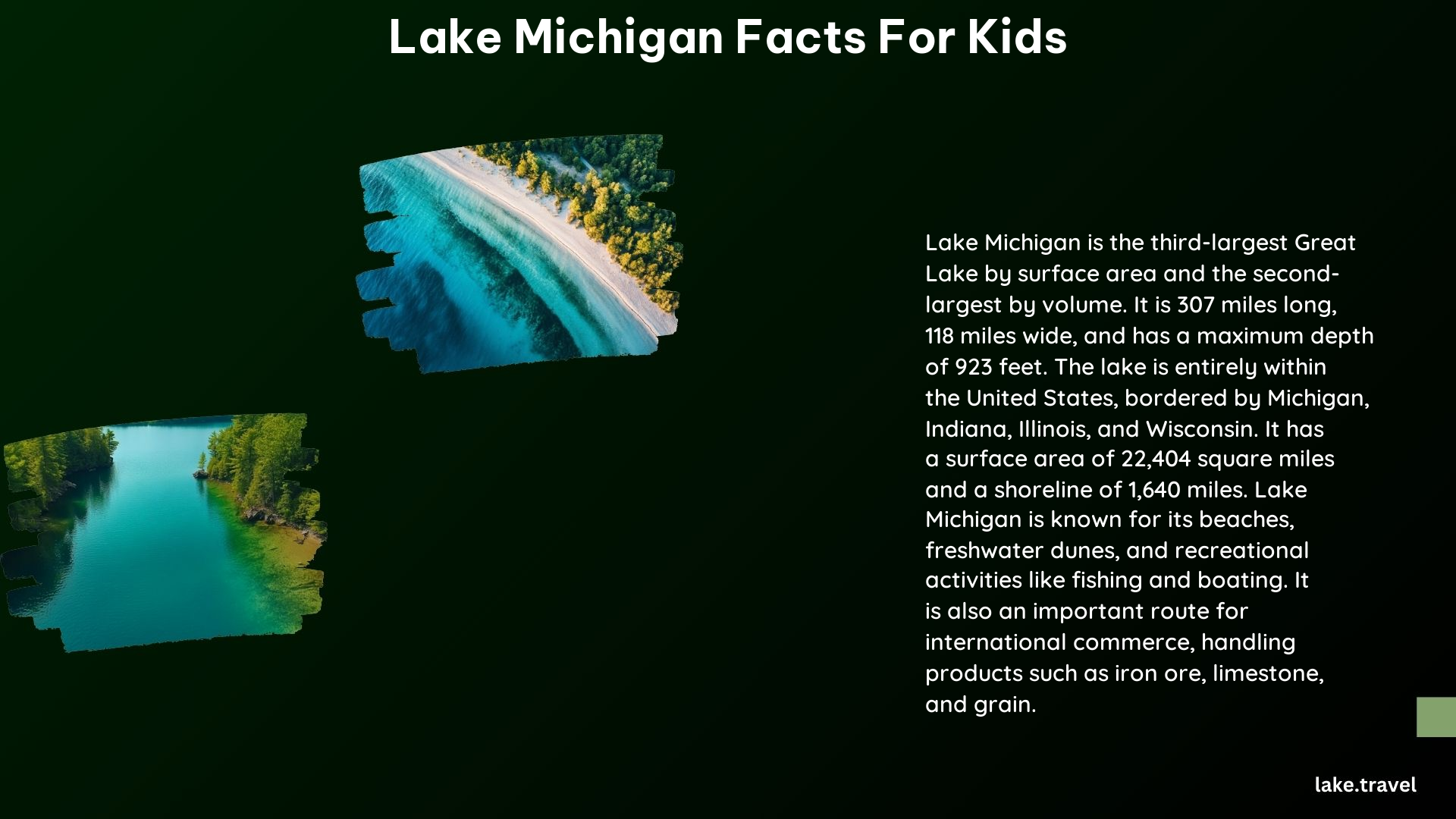Lake Michigan is one of the five Great Lakes in North America, known for its vast size, unique features, and rich history. As a premier destination for outdoor enthusiasts, it offers a wide range of recreational activities and is a significant source of freshwater. In this blog post, we’ll explore the fascinating facts about Lake Michigan that every kid should know.
Origin of the Name

The name “Lake Michigan” has an interesting origin, derived from the Ojibwa Indian word “mishigami,” which means “huge lake” or “great water.” This name perfectly captures the sheer size and grandeur of this magnificent body of water.
Size and Location

Lake Michigan is the third-largest of the Great Lakes by surface area and the second-largest by volume. It is the only Great Lake that is entirely within the United States, bordered by the states of Michigan, Wisconsin, Illinois, and Indiana.
| Specification | Measurement |
|---|---|
| Surface Area | 22,404 square miles (58,030 square kilometers) |
| Length | 307 miles (494 kilometers) |
| Width | 118 miles (190 kilometers) at its greatest width |
| Greatest Depth | 923 feet (281 meters) |
Hydrology
Lake Michigan’s hydrology is a complex and fascinating system, with several major rivers and outflows that shape its character.
Primary Inflows
- Fox River
- Grand River
- Menominee River
- Milwaukee River
- Muskegon River
- Kalamazoo River
- St. Joseph River
Primary Outflows
- Straits of Mackinac
- Chicago River
- Calumet River
Interesting Features
Lake Michigan boasts a variety of unique features that make it a truly remarkable natural wonder.
Shoreline
The shoreline of Lake Michigan is an impressive 1,400 miles (2,300 kilometers) long, with an additional 238 miles (383 kilometers) of shoreline for the islands within the lake.
Islands
Lake Michigan is home to several islands, including the notable Beaver Island and North Manitou Island, which offer stunning natural landscapes and recreational opportunities.
Coastal Cities
The shores of Lake Michigan are home to several major cities, including Chicago, Milwaukee, and Gary, which have played significant roles in the region’s history and economy.
Fun Facts
Lake Michigan is not only a natural wonder but also a hub of recreational activities and economic importance.
Recreational Activities
Lake Michigan is a popular destination for swimming, fishing, and boating, offering endless opportunities for outdoor enthusiasts to enjoy the lake’s pristine waters and stunning scenery.
Economic Importance
In addition to its recreational value, Lake Michigan is a significant source of freshwater and supports international commerce, making it an economically vital resource for the surrounding regions.
Unique Feature
One of the most remarkable features of Lake Michigan is the largest freshwater dune system in the world, located along its shores in the state of Michigan.
History
Lake Michigan’s history dates back millions of years, with its formation and exploration playing a crucial role in the region’s development.
Formation
Lake Michigan was formed approximately 1.2 billion years ago due to the Midcontinent Rift, a geological event that created a deep valley that was later filled with water from melting glaciers.
Exploration
Lake Michigan was first discovered by French explorer Jean Nicolet in 1634, marking the beginning of its exploration and the region’s subsequent settlement and development.
Conclusion
Lake Michigan is a truly remarkable natural wonder, with a rich history, unique features, and vital economic and recreational importance. By exploring these fascinating Lake Michigan facts for kids, we can gain a deeper appreciation for this magnificent body of water and the role it plays in the lives of those who live near and visit its shores.
